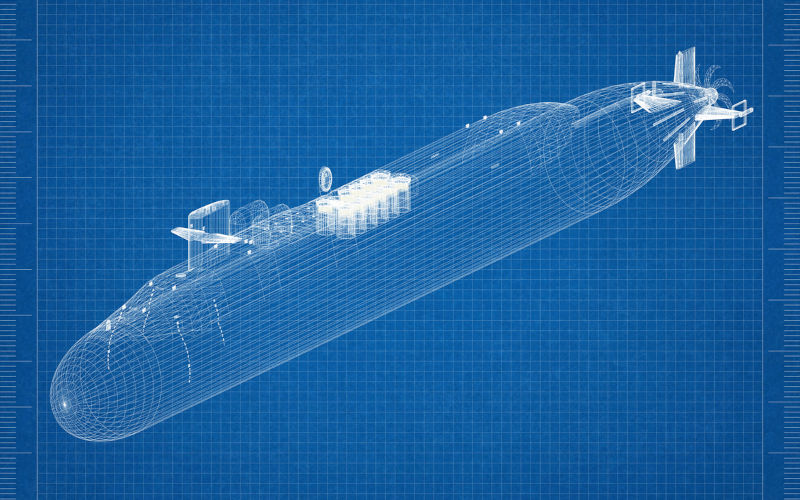While Australians pride themselves, for the most part, in having stricter gun laws than most and not being warlike in disposition, their governing officials have increasingly thought otherwise. War drums are beating. The chatter about acquiring and building armaments is getting more frenzied. As a client state of the US imperium, firmly enmeshed in the security arrangements of the AUKUS agreement, Canberra is becoming increasingly interested in militarising the population and turning the country into a garrison state.
There are several ways this can be achieved. If Australia is to have a fleet of nuclear-powered submarines, then it will need skills that are yet to be attained. Huge investments will be required in science, technology, engineering and mathematics (STEM, in other words), less for peaceful endeavours than beefing up a machine ready for war. Universities and the entire tertiary education sector will be unashamedly co-opted by the military-industrial complex.
And then there are the children. Pliable, fragile, impressionable. Let them know that the joys of war will be heroically greater than the returns of peace. You can even have a lucrative career in the bargain. Such is the understanding of the Australian Defence Department’s public relations campaign on drumming up interest in profligate submarine projects.
On June 19, it launched a “Nuclear-Powered Submarine Propulsion Challenge in Australian high schools providing a new generation of science, technology, engineering and mathematics (STEM) students the chance to win a trip to HMAS Stirling in Western Australia to see first-hand how submarines work.” The challenge, “free to enter and open to all high school students in years 7-12”, is intended as an introductory, nationwide program, providing “teachers with learning resources to help students design their own engineering plans for submarine nuclear propulsion.” Such projects are tantamount to encouraging children to assemble their own kits for killing, while feeling a good deal of pride along the way.
Rear Admiral Jonathon Earley, Deputy Chief of Navy, extolled the merits of the challenge, claiming that it gave students across Australia “an opportunity” to appreciate “the STEM principles behind one of the most significant national projects ever undertaken in Australia, as we prepare to deliver nuclear-powered submarines for the Royal Australian Navy.”
Earley, sporting his advertiser’s hat, promised the winners much excitement: “a visit to HMAS Stirling in Western Australia”, the chance to “tour a Collins-class submarine”, a dining experience with submariners “and virtually drive a submarine through Sydney Harbour in the submarine bridge training simulator.” If you can’t do the real thing, video gaming will suffice.
The press have also picked up on the extent Defence are moving into the curriculum, and are ghoulishly salivating for that fact. “A tech firm, a global defence company and SA teachers have teamed up to build an extraordinary new workforce,” The Advertiser celebrated in a July column.
Arms manufacturers have also gotten into the STEM war racket through such indoctrinating projects as the Beacon initiative, which, according to BAE Systems, “focuses on young people aged between 8-11, helping them understand more about technology early in their education and to encourage more children from diverse backgrounds [to] consider STEM subjects.” In May this year, BAE Systems Australia boasted about how “more than 600 students in years 4-6 across Victoria, South Australia, Western Australia and New South Wales will benefit from the Beacon program this year, which involves in-school learning and intensive STEM focused camps.”
The immersive technology company Lumination, in partnership with BAE Systems Australia, has also sponsored such initiatives as the “4-Day Beacon Student Holiday Program”, intended to give students opportunities “to solve real world problems around sustainability through the use of emerging technologies.” All innocent enough, till the darker picture emerges.
Such a military industrial complex has also been taken over by an army of trendoids attuned to the socially sensitive. Any all-functioning war machine must be diverse. Members of the indigenous population are being courted. Women are particularly the subject of interest. As Shelley Willsmore, head of HR at BAE Systems Australia observed with regret, “young people – and young women especially – can have a negative view of the role of defence industry.”
Companies such as BAE Systems go even further in targeting schools in socially disadvantaged areas, presenting the means of fostering death with a pedagogue’s caring face. The Smith Family’s STEM education program for underprivileged children, Michael Willis of the Independent and Peaceful Australia Network wrote in August 2022, receives funding from BAE Systems Australia. In doing so, such companies engage in PR exercises “designed to prevent community opposition to the presence of their research and manufacturing facilities.”
The lengthy tentacles of weapons manufacturers and their spread into education has become inexorable. In its 2021 report, Minors and Missiles, the Medical Association for Prevention of War found that “major weapons companies seek to build positive brand recognition amongst Australian primary and secondary students, and attract the ‘best and brightest’ young people into a comprehensive talent pipeline.” Company programs emphasise ethics numbing gamification, particularly pertinent to “the next generation of offensive, intelligent, and autonomous weaponry – weaponry whose moral and legal implications are profound.” Throw in a few prizes and seducing initiatives, and the children, along with their gulled teachers, will be none the wiser.
Binoy Kampmark was a Commonwealth Scholar at Selwyn College, Cambridge. He lectures at RMIT University, Melbourne.

